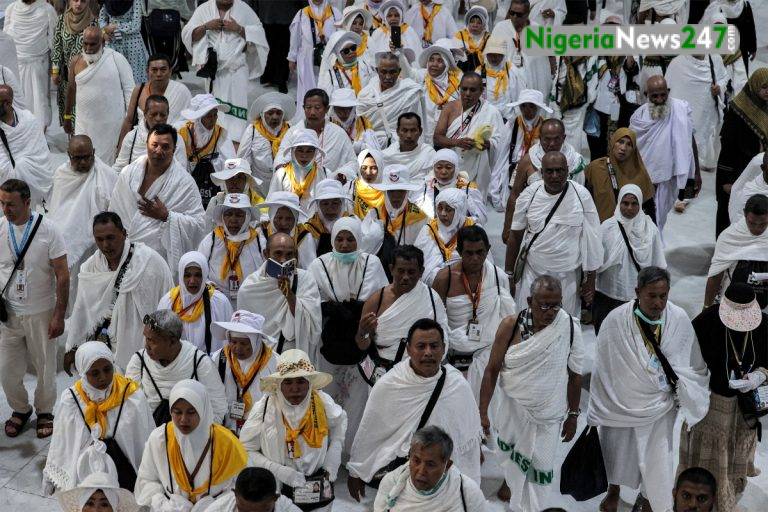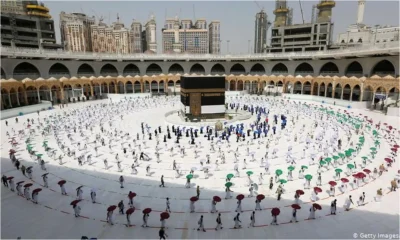WORLD
Over 1.5 Million Muslim Pilgrims Ascend Mount Arafat for Hajj’s Peak Day

Over 1.5 Million Muslim Pilgrims Ascend Mount Arafat for Hajj’s Peak Day Arafat on Saturday, marking the high point and most challenging day of the annual Hajj pilgrimage.
Pilgrims from around the world will ascend the 70-meter (230-foot) hill, located about 20 kilometers (12 miles) from Mecca, where the Prophet Mohammed is believed to have delivered his last sermon.
The desert summer heat is expected to reach 43 degrees Celsius (109.4 degrees Fahrenheit), posing significant challenges, especially for the elderly, during a day of prayer and Quran recitation.
The Hajj, which lasts at least five days and is conducted mostly outdoors, “is not easy because it is very hot,” said Abraman Hawa, 26, from Ghana. “We have sun… but it is not as hot. But I will pray to Allah at Arafat because I need his support,” she added.
Saudi authorities have advised pilgrims to stay hydrated and protect themselves from the sun. Since men are not allowed to wear hats, many carry umbrellas.
Last year, more than 10,000 heat-related illnesses were recorded, with 10 percent being heat stroke, a Saudi official told AFP this week.
The Hajj, one of the world’s largest religious gatherings, is increasingly affected by climate change. A Saudi study noted that regional temperatures are rising by 0.4 degrees Celsius each decade.
However, the scorching summer sun did not deter Mohammed Farouk, a 60-year-old Pakistani pilgrim. The Hajj is “very important for me as a Muslim,” he said.
The enormous crowds spent the night in a massive tent city in Mina, a valley several kilometers outside Mecca, Islam’s holiest city. Many pilgrims were tightly packed in air-conditioned tents, lying close together on narrow mattresses. They were grouped by nationality and price, based on how much they had paid for their Hajj packages, which usually cost several thousand dollars.
After Arafat, the pilgrims will head to Muzdalifah to collect pebbles for the symbolic “stoning of the devil” ritual in Mina on Sunday. The Hajj is said to follow the path of the Prophet Mohammed’s final pilgrimage, about 1,400 years ago.
The event is a significant source of legitimacy for the Al Saud dynasty, whose monarch holds the title “guardian of the two holy mosques” in Mecca and Medina. It is also a major financial boon for Saudi Arabia, which is trying to develop religious tourism to reduce its dependence on crude oil.
Last year, the kingdom received more than 1.8 million Hajj pilgrims, with around 90 percent coming from abroad. It also welcomed 13.5 million Muslims for Umrah, the smaller pilgrimage that can be performed year-round, with a goal of reaching 30 million by 2030.
This year’s Hajj takes place in the shadow of the Gaza conflict, following eight months of bloodshed that remains a painful issue for many in the Muslim world.





















You must be logged in to post a comment Login